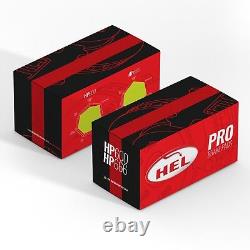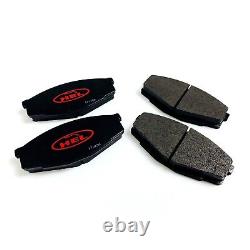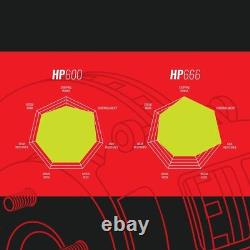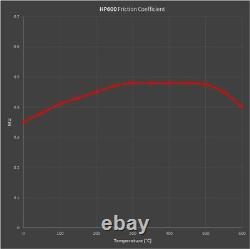Front HP666 HEL Track Brake Pads Renault Clio MKII 2.0 16V Sport 172 (02/00-)






Front HP600 HEL Track Brake Pads Renault Clio MKII 2.0 16V Sport 172 (02/00-). 2.0 16V Sport 172. Welcome to the HEL PRO range of automotive brake pads. With an impressive operating temperature window of up to 800°C, these pads will handle the most serious braking conditions and we develop these exclusively for racing or track day use. Both our HP600 and HP666 brake pads give great consistency, longevity and friction at both hot and cold temperatures.
The HP666 has a ceramic kevlar compound that has a great initial bite, excellent control and pedal feel. It delivers a powerful friction coefficient of 0.42-0.57µ over a temperature range of 0-800°C. This pad sacrifices a little brake noise and rotor dust to deliver the ultimate in stopping power.
This is the brake pad to choose when milliseconds make the difference between you winning and losing. We would recommend a high carbon grooved disc to compliment this pad. With a similar compound to the Feredo DS3000, it transfers a small layer of material onto the disc and if you have a softer disc you might get an excessive build up of material transfer. This will not affect performance, only aesthetics.
The temperature range of this pad is 0-800°C, with the optimum working temperature being 666°C. The HP600 also has a ceramic supermetal compound that has a milder initial bite than the HP666, but still retaining the same excellent control and pedal feel with a powerful friction coefficient of 0.35-0.48µ over a temperature range of 0-600°C.
This is a great all-round track day pad that will outperform a lot of more expensive pads. Similar in compound to the Feredo DS2500, we have had very good results combining this pad with a plain disc such as Pagid.
When brake pads run at high temperatures, a layer of gas can sometimes be created between the pad and brake disc. This can make the driver feel like they have lost braking power as the brake pedal feels the same but the car will not stop as quickly, this is called brake fade. To remedy this, a slot is cut into all HEL Performance pads to offer the gasses a route to escape. HEL Performance brake pads are put through a heat curing treatment in the manufacturing process. This process removes unwanted gasses from the materials in advance, reducing the gasses that can cause fade within the brake pad.
Because of this treatment, our brake pads only need light bedding in to match the padding to the disc. Brake pads should be bedded in until up to mid range working temperature then allowed to cool properly. This will also help to removes any gasses that are still within the pad.
Not following this process may cause problems leading to a decrease in optimum performance.

